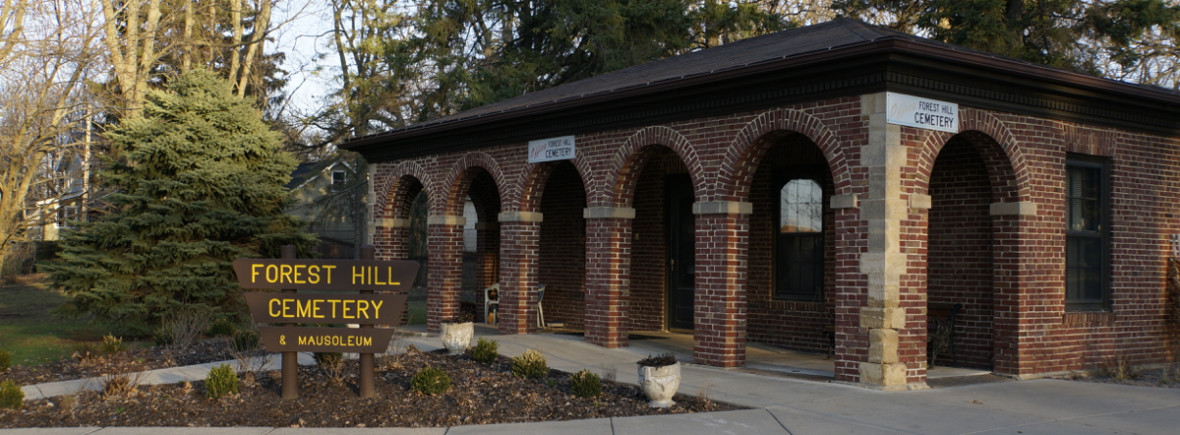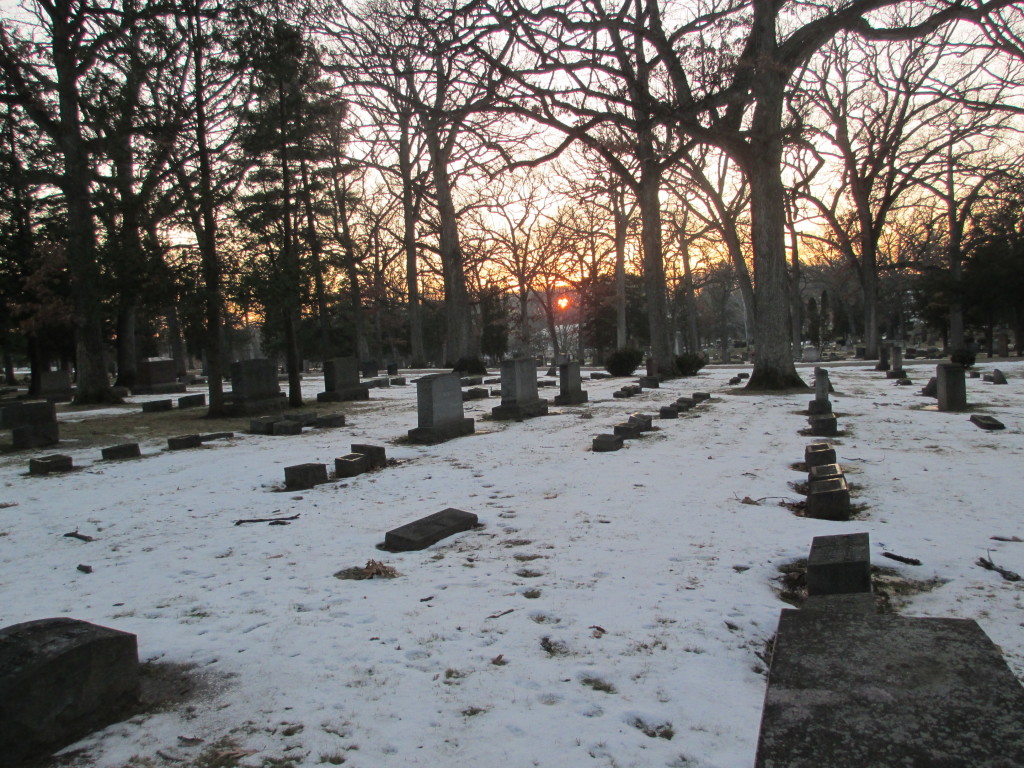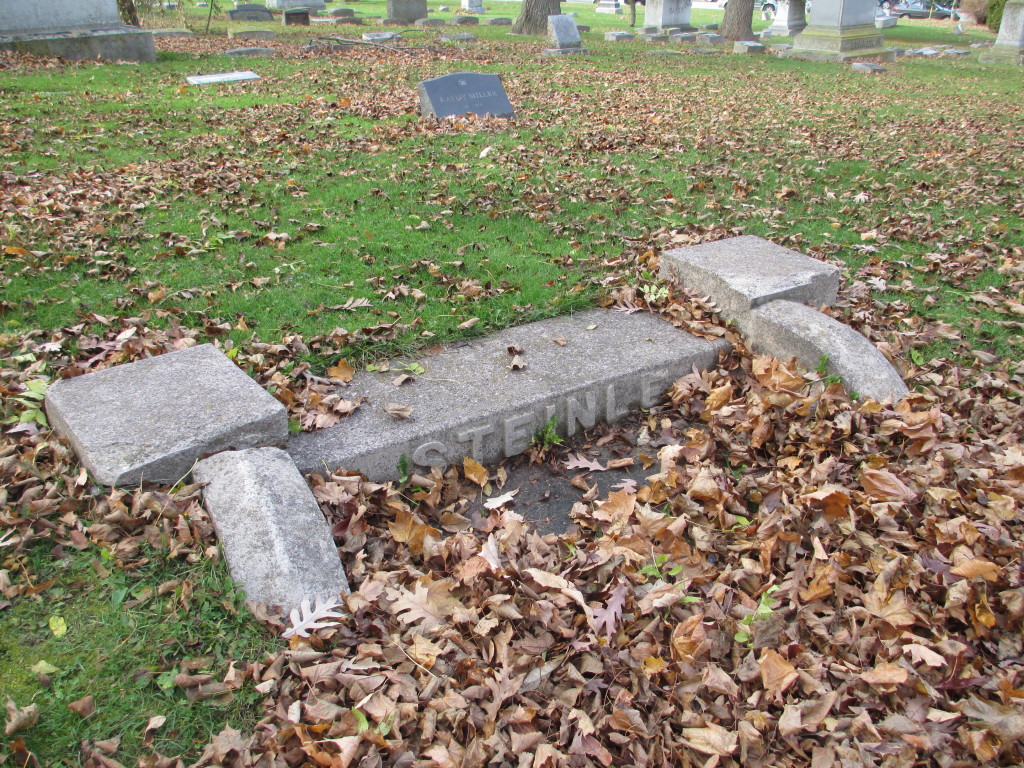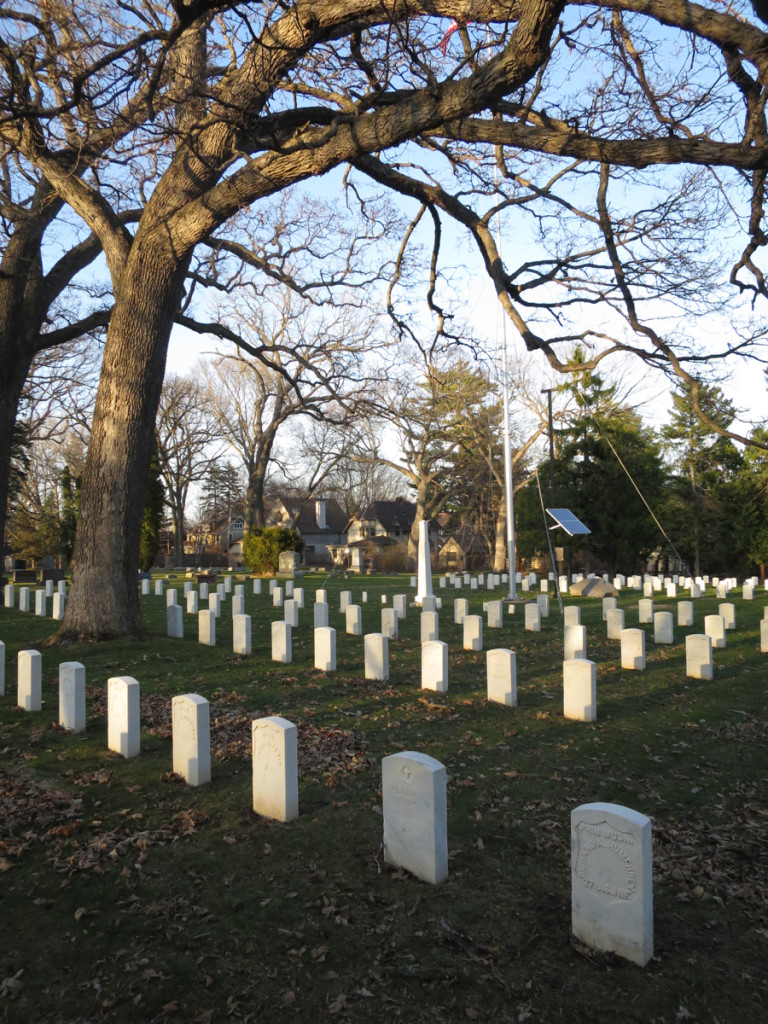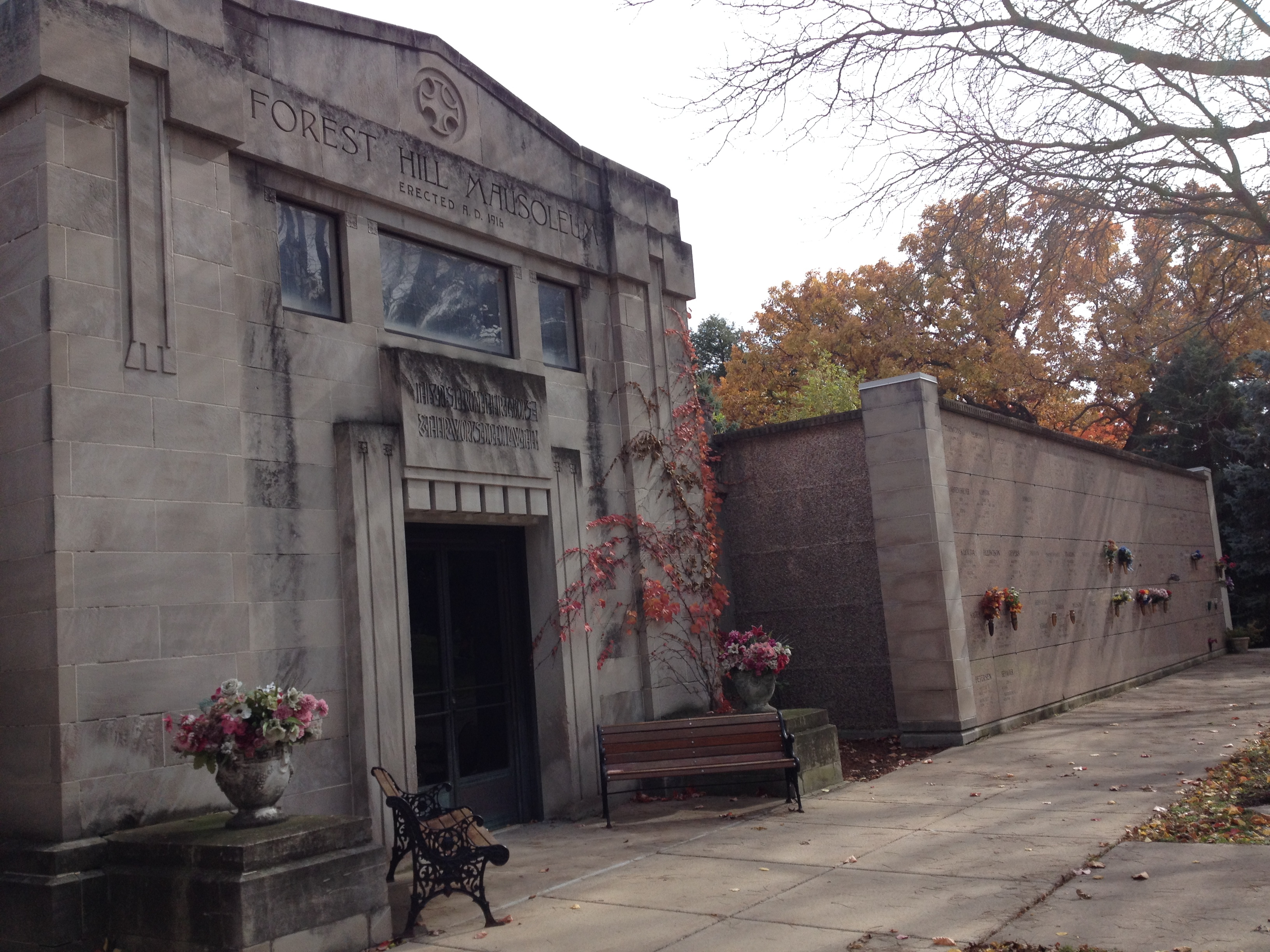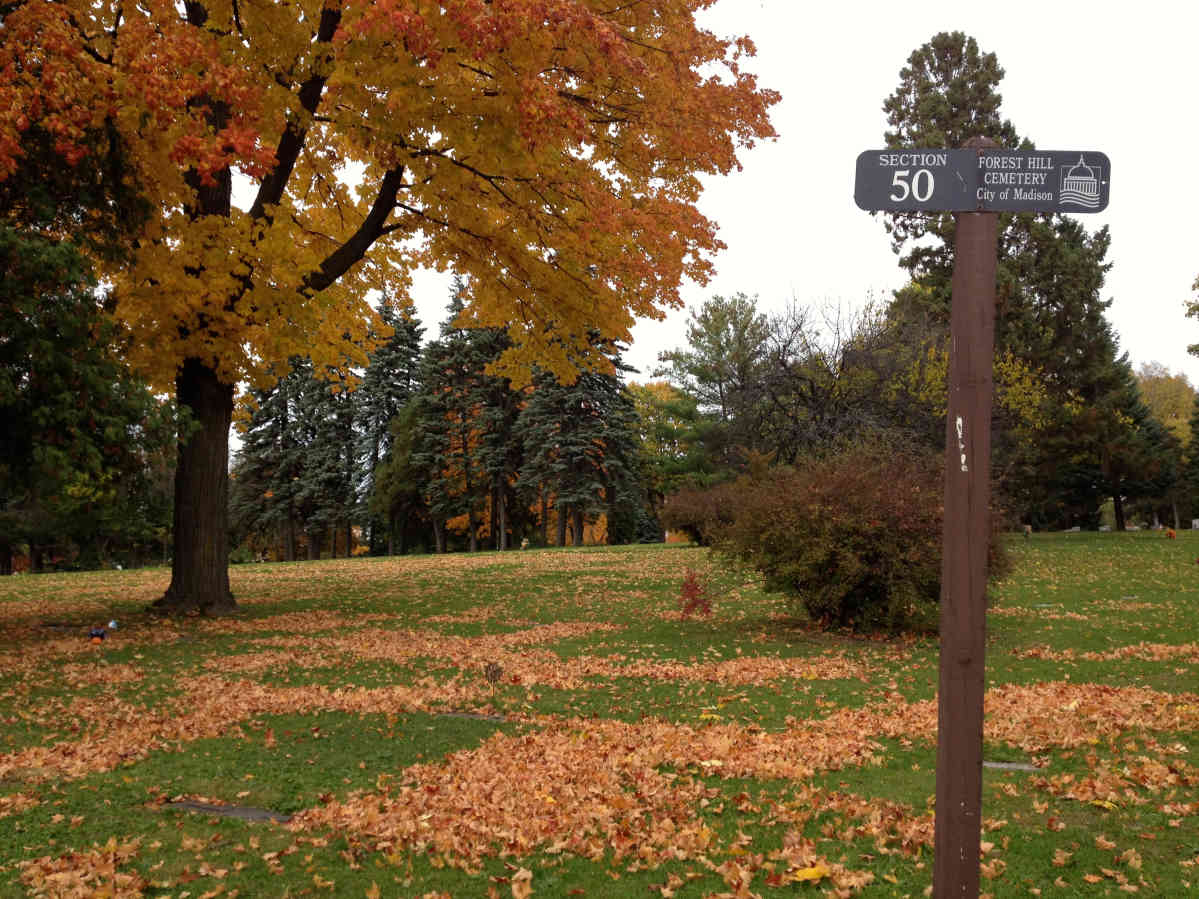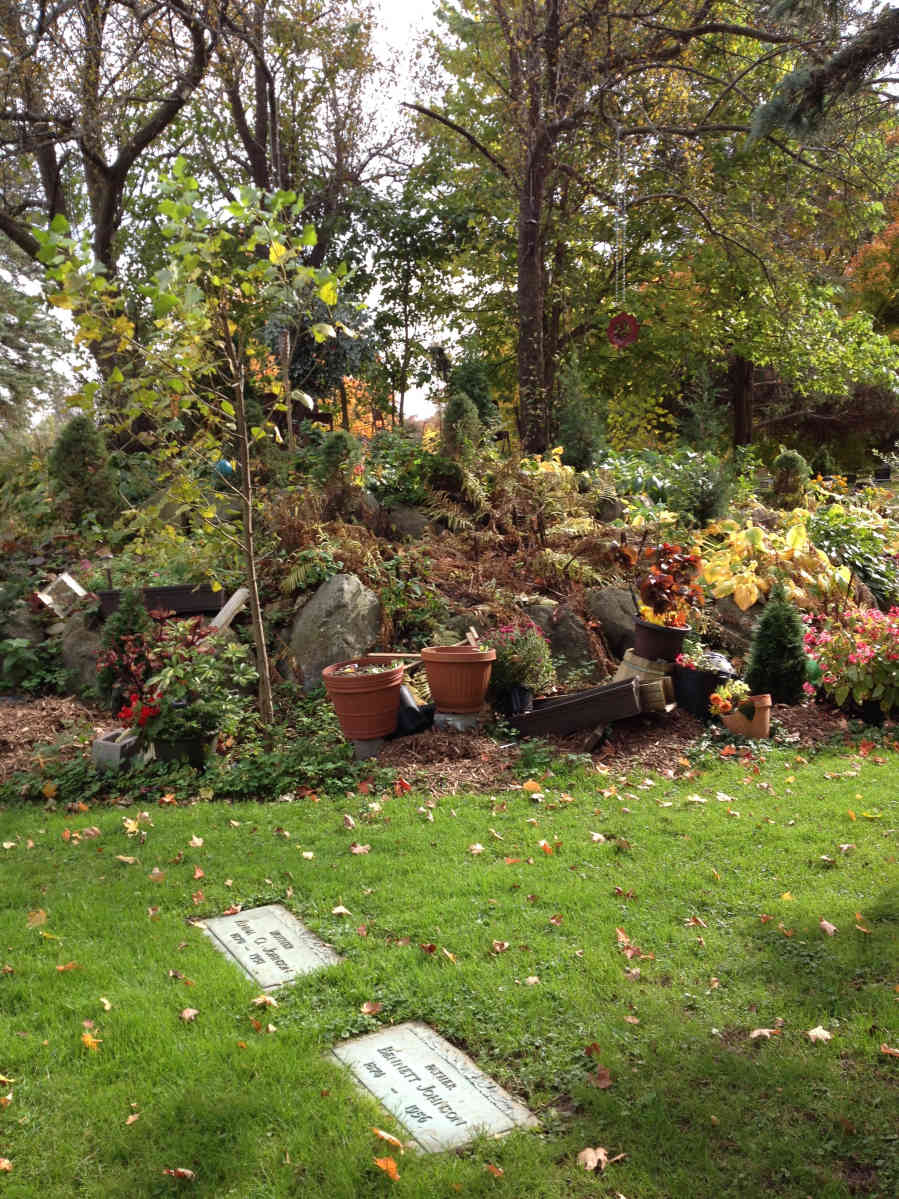The history of Forest Hill Cemetery dovetails with the history of the City of Madison. Spend any time walking the cemetery grounds and you will begin to see familiar names inscribed on its tombstones. They are generations of prominent local residents, recognizable from street signs around town and buildings on the university campus: Williamson, Brittingham, Atwood, Steenbock, Doty, and Van Hise, just to name a few.
The following overview details the ways that people have shaped the cemetery over time and how its evolution reflects social and urban developments in the City of Madison. This history is divided into three periods: Rural Retreat (1850s-1880s), Streetcar Suburb (1890s-1930s), and Modern Landscape (1940s-present). With each of these eras came different design ideals as well as distinct modes of transportation that visitors used to travel to and through the cemetery. Our story begins in the elegant carriage era with the founding of Forest Hill.
Rural Retreat: 1850s through 1880s
The City of Madison purchased the 80 acres that would become the core of Forest Hill in January 1857 for $10,000 in bonds. This was following several scouting trips documented by local newspapers. In 1856 the Argus & Democrat described one such visit:
We this morning took a view of the grounds belonging to John Wright, which he proposes to offer to the City for Cemetery purposes….It is beautifully located, contains a fine growth of thrifty timber, is high and undulating in all directions, and commands from nearly every part a fine view of the City, Lakes Mendota, Monona and Wingra….
The tract was located two-and-a-half miles away from the State Capitol building and was, at the time, half a mile outside of city limits in the midst of farmland. Many of Forest Hill’s earliest interments were reburials from Madison’s first graveyards, including the overcrowded village cemetery originally located in current-day Orton Park.
Forest Hill’s transition from agricultural to cemetery usage was gradual. In 1861 Madison’s Common Council asked the Cemetery Committee to disallow “any person or persons to keep cattle, of any kind, inside of said cemeteries,” which implies that farm animals were regularly roaming the grounds. Five years later, the Wisconsin State Journal wrote about a group of men discovered “with horses, plows and hoes, diligently engaged in planting potatoes in the unoccupied part of the cemetery.” Even though the City of Madison owned the land, residents and neighbors used the burying grounds for their own purposes in its early years.

“Plan of Section No. 10 Forest Hill Cemetery Belonging to the Jewish Congregation.” 1865. Ink and watercolor on cloth. Wisconsin Historical Society Image 105039.
During the 1860s the city made substantial improvements to Forest Hill with profits from lot sales, including the addition of fences, a gate, a receiving vault for storing bodies in the winter, and new plantings throughout the property. The city offered to sell separate cemetery sections to local Catholic and Jewish congregations. The Jewish group accepted and purchased Section Ten on the southwest side of the cemetery. The Catholics declined. In 1863, however, the Roman Catholic Societies purchased 25 forested acres from the city on what had been the north side of Forest Hill, establishing what is now the separate Resurrection Cemetery.
Forest Hill’s founders designed its landscape in the tradition of the rural cemetery, which emphasized a picturesque garden aesthetic. Archival records from the Wisconsin Historical Society reveal that Darwin Clark, who was one of Madison’s first residents and a prominent member of the Cemetery Committee, chose its name. “Forest Hill” evokes the image of a sheltered and undulating rural retreat. Rural cemeteries were known for their curvilinear avenues, which were believed to enhance the contemplative nature of the burial grounds. This romantic landscape ideal is clearly expressed in an 1858 article from Madison’s Argus and Democrat newspaper that compares Forest Hill to the country’s most famous rural cemeteries: “as it is in its primitive state, almost—covered with trees and many other native ornaments—it only requires skillful landscape gardening…to render it a rival to Mount Auburn, Mount Hope and Greenwood.”
In the mid-nineteenth century, Madison’s most prominent citizens would drive their carriages to the cemetery on Sunday afternoons to picnic. Only about 12 percent of city residents owned carriages at this time, so these visits would have been highly visible and socially privileged acts. ((David V. Mollenhoff, Madison: A History of the Formative Years, 2nd ed. (Madison: The University of Wisconsin Press, 2003), 192, 435.)) Family plots were viewed as didactic sites where children could learn about their genealogy. Some tracts at Forest Hill still display the stepping-stones that would have allowed Victorian-era citizens to descend from their carriages directly into the ancestral resting place.
The Civil War was a turning point for cemetery usage throughout the United States, including Forest Hill. In addition to housing the military hub of Camp Randall—a statewide training facility for Union soldiers, war hospital, and prisoner of war camp—the City of Madison also sent two-thirds of its men ages 20 to 45 off to war, which was a larger proportion than any other city in Wisconsin. Of these, 24 percent died in service. ((Ibid., 94.)) Everyone in Madison would have lost a family member or friend and, after the war, commemorating fallen soldiers at Forest Hill became an important local ritual.
The cemetery’s military sections include the Soldiers Lot where approximately 240 Union dead are buried, as well as the Confederate Rest plot which holds 140 prisoners of war who died at Camp Randall. Memorial Day or, as it was then called, “Decoration Day,” was first observed in Madison in 1868 with a parade from the center of town to the cemetery to adorn its military graves, a practice that continued for many years. A May 30th, 1870 article in the Wisconsin State Journal describes this tradition:
There is a fire in the human heart, thank God, which only death can quench. It flamed in the bosoms of these noble men who now sleep under the waving grass, in the shadow of the oaks of Forest Hill. It burns, a pure and sacred flame, in the hearts of the fair women, whose eyes suffuse with tears to-day, as they twine wreathes in memory of the dead. It warms the heart of children whose dimpled hands will scatter flowers above the graves of those who loved them….
Forest Hill became an important place of grieving for the citizens of Madison in the wake of widespread loss. In 1878, Catlin Chapel was constructed near the cemetery entrance as a place for mourners to congregate and worship. Forest Hill had begun a transition from an exclusive retreat, accessible to Madison’s carriage-owning elite, to a place for the general public. This process was accelerated by the swift arrival of the electric streetcar.
Streetcar Suburb: 1890s through 1930s
In 1897 streetcar tracks were extended from downtown Madison to Forest Hill’s entrance at the corner of Regent Street and Speedway Road, ushering in a new era in cemetery history. In the pre-automobile age, trolleys broke the bounds of the walking city and enabled suburbanization. Madison’s electric streetcars went 30 miles per hour and came every 12-to-16 minutes on various lines. ((Ibid., 192.)) Their widespread usage enabled the growth of suburbs such as Wingra Park, University Heights, and Westmorland. Streetcars also critically changed the way that people moved to and through Forest Hill, which became a silent suburb all its own.
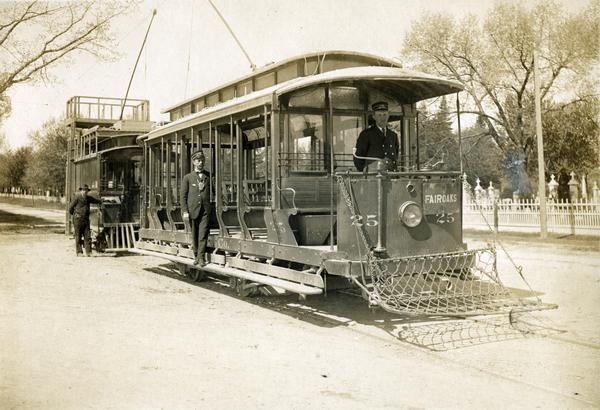
This open air streetcar is parked near the cemetery. “Fair Oaks Streetcar.” c. 1910. Wisconsin Historical Society Image 24965.
Whereas before, upper-class citizens could drive into the cemetery and directly to a family plot, now a wider public could reach the gates via streetcar and walk from there. This heyday is recounted in the Madison newspapers. A Wisconsin State Journal article from April 9th, 1902 explains: “Last Sunday the street cars took hundreds to the cemeteries, and all loving hearts and willing hands spread tokens of affection upon hundreds of graves.” The current-day cemetery office was originally built as a streetcar station in 1908 to accommodate these crowds.
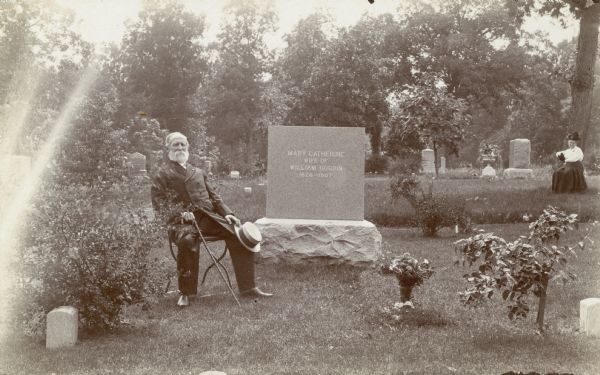
This photograph shows William Hogbin at his first wife’s grave. The woman in the background might be his second wife. “Captain William Hogbin.” c. 1915. Wisconsin Historical Society Image 83139.
With the arrival of the masses, the cemetery became a more social and recreational space. A 1928 Capital Times article declares, “No Longer Do They Spoon at Forest Hill: Lovers Forsake Old Haunt In Cemetery.” It explains that, “Last year the caretaker and superintendent of Forest Hill received numerous complaints that moonstruck lovers were gravely pursuing their love making within the cemetery grounds.” In fact, young couples nationwide were repurposing these picturesque and secluded gardens for romantic trysts. Their meetings represented just one facet of increasingly social and subversive cemetery usage. Many local commissions attempted to regulate this new recreational purpose, charging admission fees and installing instructive signage. A 1910 booklet on the “Rules and Regulations of Forest Hill Cemetery” sets hours of admission and forbids “plucking any flowers, shrubs, or plants,” “riding or driving faster than a walk,” the use of “refreshments of liquors” and “persons…resting or occupying seats upon lots which do not belong to them, and from crossing lots or lawns except so far as necessary to gain access to their own lots.”
Forest Hill’s landscape architecture and building program shifted in this era to accommodate new design ideals. The mausoleum, which was originally built in 1916 by the Illinois Mausoleum Company, offered the alternative option of aboveground burial. A November 10th, 1913 article in the Wisconsin State Journal reveals that Forest Hill’s directors are “consider[ing] doing away with the old method of marking graves,” and, instead, requiring flat tombstones. Officials eventually adopted this memorial park design in one part of the cemetery. A pamphlet from the 1930s describes Forest Hill’s “Park Plan Section:”
Many people object to the erection of monuments and markers on their lots, and with the wide-spread innovation of memorial parks, and the increasing demand for this type of lot, the Cemetery Commission opened a section in which there are no visible monuments….This section is landscaped with trees, evergreens, roses, and many other species of flowering bushes. Near the center of this area is a bird bath pyramid planted with colorful flowers and beautiful bushes.
Section 50, described above, remains flat with sunken tombstones, which allows for sprawling views of the undulating land. The “bird bath pyramid” still stands as a whimsical landscape feature.
In the 1920s the City of Madison purchased two tracts of land bordering Forest Hill: 20 acres from the Zwerg Farm, which was incorporated into the cemetery, and 60 acres to the southwest from the Wingra Land Company. The city has leased this 60-acre tract to the nine-hole Glenway Golf Course since 1927, and several avid golfers have chosen plots in adjacent sections within view of the greens. Since this era, the burial grounds at Forest Hill have comprised 75 acres.
While changes in recreational usage and landscape design have continued to shape Forest Hill, even its newer sections retain many nineteenth-century rural cemetery features including lush vegetation, winding roads, and elaborate tombstones. These attributes continue to set Forest Hill apart as a sacred suburb in the heart of the city, even as it has evolved in the modern era.
Modern Landscape: 1940s through the Present
During and after World War II, nineteenth-century burying grounds came to embody nostalgia for an earlier and perceived-to-be simpler America. As cities such as Madison grew in the automobile age, they absorbed once-rural cemeteries. Preservationists pushed, in turn, for the public interpretation of burying grounds like Forest Hill as valuable cultural landscapes.
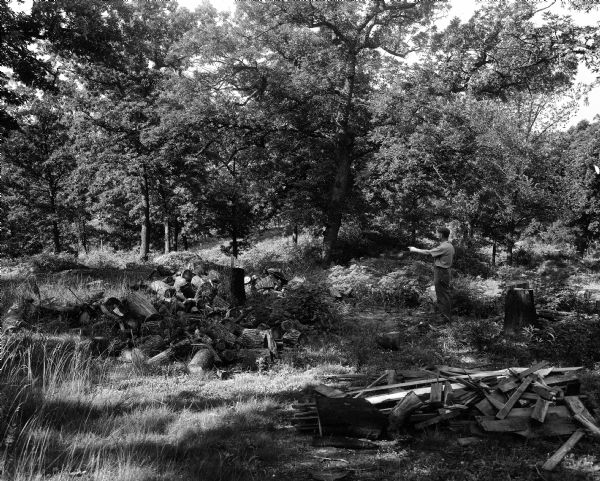
This photograph shows M. F. Chapman, a cemetery caretaker, gesturing toward undeveloped land on the western edge of Forest Hill. “Forest Hill Cemetery.” 1957. Wisconsin Historical Society Image 96102.
This period in Forest Hill’s history saw the development of several new sections on the west side of the cemetery. Section 35, which already featured three Native American effigy mounds, was set aside as a separate military lot for veterans from twentieth-century wars. The graves of Madison’s Jewish congregations, which had been concentrated in Section 10 since the 1860s, overflowed into sections 36 and 38. And sections 42 and 44 filled with markers from Madison’s growing Hmong community.
In the postwar era Americans grew increasingly dependent on automobiles, which significantly changed the ways that people moved to and through Forest Hill. A 1950 survey on recreation in Madison found that a large majority of households owned a car. As automobiles appropriated the winding avenues of the rural cemetery, it once again became common for visitors to drive onto the grounds and directly to a plot or grave. These days it is not unusual to see a long line of cars in a funeral procession winding through Forest Hill. Residents of the surrounding neighborhoods teach their teenagers to drive on the quiet cemetery avenues. The replacement of the streetcar with the automobile, in combination with the development of public parks around the City of Madison, largely ended the era of Forest Hill as a recreational space.
As Forest Hill lost its social role in the lives of Madison’s citizens, it gained significance as a place where the history of the city can be interpreted. Since the early 2000s, the Wisconsin Veterans Museum has sponsored an annual Talking Spirits tour that runs for a week each October. Groups stop for short vignettes performed by local actors impersonating Civil War-era citizens buried in the cemetery. For example, in 2013 an actor portrayed Rachel Bradford, whose sons Oscar and Rezillion were members of the Iron Brigade in the Second Wisconsin Infantry Regiment. The vignette highlighted the tragedy of their deaths at the Battle of Gettysburg and the impact of Civil War losses on life in Madison. Living Spirits tours brought 1,600 school children and 550 members of the general public to Forest Hill in 2014.
The Wisconsin Veterans Museum is not alone in interpreting the cemetery. Historic Madison has authored a comprehensive Biographical Guide to Forest Hill Cemetery that uses the cemetery landscape as a springboard to discuss more than 3,000 of Madison’s residents from the city’s founding to the present day. They also arrange guided year-round tours. As Forest Hill ages, it is becoming an essential repository for Madison’s history and a record of the many individuals who have shaped the city throughout time.
SOURCES
A Biographical Guide to Forest Hill Cemetery: The Ordinary and Famous Women and Men Who Shaped Madison and the World. Madison, WI: Historic Madison, Inc., 2002.
Darwin Clark Papers. Collection WIHV91-A225. Wisconsin Historical Society Archives.
Forest Hill Cemetery: Non-Sectarian. Madison, WI: Cemetery Commission, c. 1930. Government Pamphlet Collection, Wisconsin Historical Society.
Gregg, Bruce. Interview with Angela Hronek. April 8, 2014.
Jackson, Kenneth T. Crabgrass Frontier: The Suburbanization of the United States. New York: Oxford University Press, 1985.
Jones, Meg. “Spirits of the Civil War ‘Talk’ in Madison.” Milwaukee Wisconsin Journal Sentinel. October 7, 2011.
Kollath, Jennifer. Interview with Angela Hronek. November 10, 2014.
Linden-Ward, Blanche. “Strange but Genteel Pleasure Grounds: Tourist and Leisure Uses of Nineteenth-Century Rural Cemeteries,” in Cemeteries and Gravemarkers: Voices of American Culture, edited by Richard E. Meyer, 293-328. Ann Arbor: UMI Research Press, 1989.
Lyford, Marjory. Interview with Angela Hronek. April 11, 2014.
Mollenhoff, David. Madison: A History of the Formative Years. 2nd Edition. Madison, WI: The University of Wisconsin Press, 2003.
Rife, Marvin. A Survey of Recreation in Metropolitan Madison, Wisconsin. Madison, WI: Community Welfare Council, 1950.
Rules and Regulations of Forest Hill Cemetery. Madison, WI: Cemetery Commission, 1910. Government Pamphlet Collection, Wisconsin Historical Society.
Sloane, David Charles. The Last Great Necessity: Cemeteries In American History. Baltimore: Johns Hopkins University Press, 1991.
Westmorland: A Great Place to Live. Madison, WI: Westmorland Neighborhood Association, 2011.
